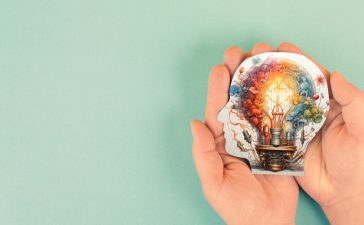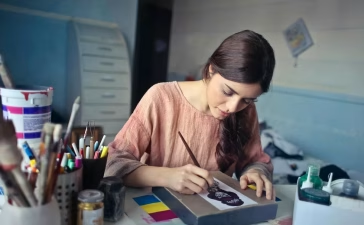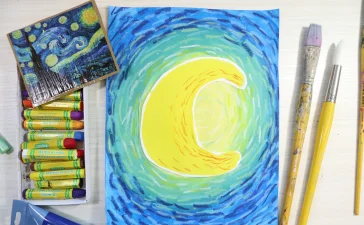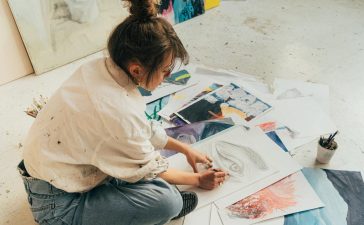Depression can feel like an unrelenting weight, a quiet yet overbearing presence that clouds joy and stifles hope. While traditional therapies and medications play a significant role in addressing this mental health challenge, an increasing number of individuals are exploring alternative, holistic methods to complement these treatments. Among them, art therapy stands out as a uniquely creative and effective approach to tackling depression and anxiety.
Rooted in the philosophy of expression and creation, art therapy provides a non-verbal outlet for emotions too complex or overwhelming to put into words. This article dives deep into the benefits of art therapy, evaluates its effectiveness, and explores why it has become such an essential tool in mental health care.
What is Art Therapy?
Art therapy is more than just painting or doodling in your free time. It’s a structured therapeutic technique led by certified art therapists who use creative processes such as drawing, painting, and sculpture to help clients explore their emotions, develop self-awareness, and manage mental health challenges. Initially popularized in the mid-20th century, art therapy focuses on the belief that creative expression can foster healing and mental well-being.
For individuals dealing with depression, traditional talk therapies (like Cognitive Behavioral Therapy) may sometimes reach a standstill. Words alone may not always suffice in conveying the tumultuous waves of emotion. This is where art steps in as a powerful medium. Through the act of creation, people experience catharsis—a release—that often opens the door to clarity, balance, and self-understanding.
The Benefits of Art Therapy for Depression
One of the most apparent benefits of art therapy lies in its ability to provide an outlet for emotions that may otherwise remain buried. Depression often leaves individuals feeling trapped or emotionally numb. When traditional outlets fail, the simple act of holding a paintbrush or pencil can reawaken a person’s ability to feel and express.
Art therapy also helps build mindfulness—a practice associated with being fully present and engaged in the moment. Immersing oneself in a creative activity like drawing or painting calms the mind, much like meditation does. This focus can help individuals temporarily escape or reprieve from their depressive thoughts, even if only for the duration of the session.
Another notable aspect of art therapy is the way it encourages self-discovery. The process of creating art often reveals subconscious thoughts and emotions previously unknown to the individual. For example, a person who paints recurring abstract shapes or dark, shadowy scenes may uncover deeper feelings of sadness or anger that they hadn’t consciously acknowledged. Both the creative process and discussions with the art therapist provide profound insights that help towards emotional healing.
Unlike conventional therapies, art therapy is flexible and individualized. It’s accessible to people of all ages and artistic abilities and can be tailored to the needs of each individual. Furthermore, unlike activities requiring extensive effort, creating art remains a gentle and enjoyable way to tackle emotional struggles without adding unnecessary stress.

How Effective is Art Therapy?
When evaluating art therapy, a key question that often arises is, “How effective is art therapy in treating depression and anxiety?” While more research continues to fine-tune our understanding, existing studies underline its significance as an effective complement to traditional treatment.
Research in The Journal of the American Art Therapy Association consistently highlights that art therapy sessions significantly improve mood, reduce stress, and decrease symptoms of anxiety. A study involving veterans handling post-traumatic stress and depression found that after just 4–6 weeks of guided art sessions, 75% of participants reported a marked reduction in their symptoms.
Beyond emotional benefits, art therapy has also been shown to improve cognitive functions for those feeling the fog of depression. Often, depression hinders concentration and problem-solving abilities, making day-to-day tasks more draining. Engagement in creative therapy sharpens focus and stimulates neural connections, which help enhance concentration and creativity over time.
Art therapy’s effectiveness is also linked to the therapeutic relationship it fosters. Working with a trained therapist ensures that the challenges and emotions elicited during therapeutic activities are handled in a safe, professional, and empathetic manner. The client-therapist relationship strengthens trust, enabling individuals to comfortably explore and address their emotional pain.
Applications in Depression and Anxiety
Art therapy isn’t limited to a single type of artistic medium. Its adaptability allows it to address different needs, interests, and therapeutic goals. For instance, someone struggling with anxiety and panic attacks may benefit from the calming strokes of watercolor painting. Meanwhile, sculpting with clay might help someone with depression channel pent-up anger or frustration constructively.
An important area where art therapy has seen notable application is in group therapy settings. Shared art-making fosters social connections and combats the isolation that many individuals with depression endure. Engaging in a community-driven creative exercise, like painting murals or collaborative sketching, reminds individuals that they are not alone in their struggles, thus building resilience and fostering hope.
Becoming an Art Therapist
For art enthusiasts who find the concept of therapeutic art fascinating, this field is also a fulfilling career path. But how much do art therapists make? While salaries may vary depending on location and experience, in the United States, certified art therapists typically earn between $48,000 to $82,000 annually. Beyond financial reward, the emotional fulfillment of helping others through creativity makes this profession especially rewarding.
Entering this career requires a master’s degree in art therapy and proper certification. Many professionals also explore additional therapeutic techniques, such as mindfulness training or somatic care, to broaden their skillset and reach.
Art Therapy vs. Other Creative Outlets
Critics of art therapy may question whether engaging in any creative outlet offers similar benefits. Can painting a picture at home have the same effect as a guided art therapy session? While self-directed arts and crafts can be therapeutic, guided art therapy offers numerous additional advantages.
A key differentiator lies in the trained therapist’s role. Art therapists are equipped to interpret creations in a non-judgmental and informed manner, connecting the visual output with the emotional state of the participant. They help clients process the emotions that arise during creative sessions, turning abstract paintings or doodles into actionable insights.
Additionally, art therapy includes progressive challenges and structured intentions designed to address specific conditions. For example, a therapist might introduce collage-making to help an individual visualize specific goals or introduce digital art tools for someone struggling to express feelings on paper. This structure ensures that sessions are both purposeful and healing.
Reclaiming Your Creative Expression
Art therapy proves to be much more than an outlet in moments of emotional turbulence—it’s a celebration of human creativity. By exploring art therapy for depression and anxiety, individuals can reconnect with themselves, reclaim their narratives, and reawaken their joy.
For art enthusiasts interested in learning more, why not explore an art therapy session? Whether you’re seeking relief or simply curious about the effectiveness of art therapy, it’s a powerful way to connect, create, and heal.






